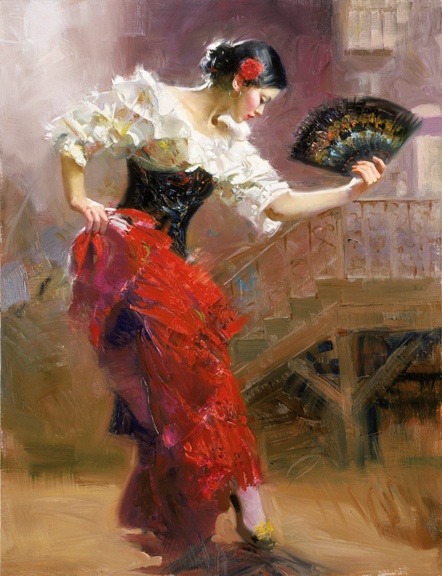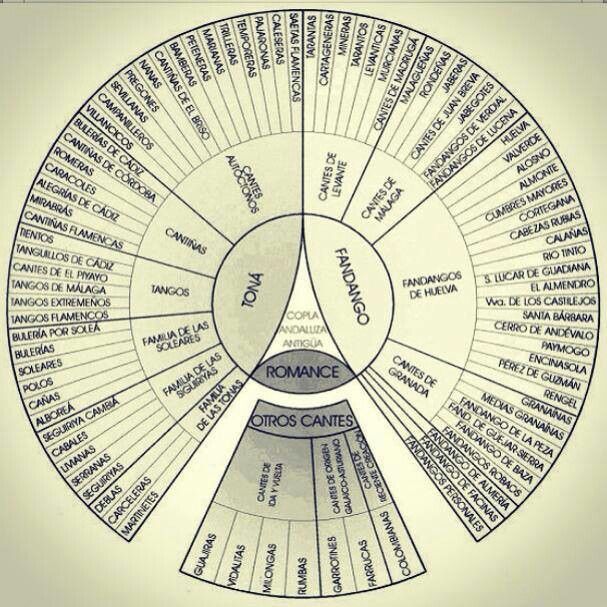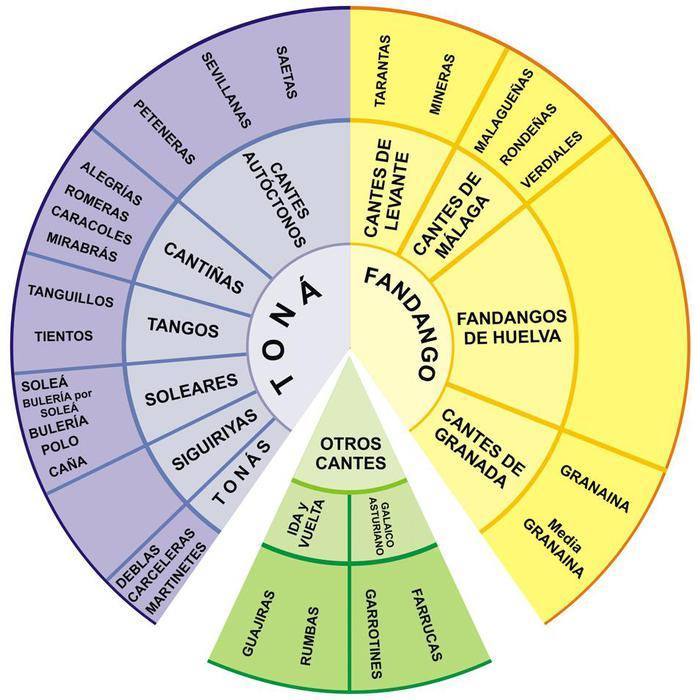flamenco
Derivates of soleá
We group in this section the different types of soleá

Alboreá: A wedding sing, banned outside the gypsy home
Alboreá (Wedding sings) Gypsies have the privilege of possessing all the different flamenco sings. One of the varieties of flamenco in which they show their idiosyncrasy is the alboreá, the sings and the dances of the wedding day. It comes from the coplas known as “alboradas”, name that refers to the dawn or the first light of the day. During the dawn of the wedding day gypsies sing and dance the alboreá as if it was a ritual this sing in honour to the attendants and especially in honour to the participants. Singing it outside his gypsy home was judged by the other gypsies as profanation, a bad omen which would bring bad things to all the gypsy community. For that reason they rarely sing it outside the gypsy rituals and it was an indiscretion that a non-gypsy would hear it. Of course, it was neither allowed the presence of non-gypsy people to this ceremony. The first mention to this variety was in 1855 in a novel by Vicente Barrantes about Juan Padilla, the fragments says: “Just listening to gypsies dancing aboreá in their homes, when the light starts shining in the mountains you can understand what the voice…


Tangos
Tangos are singing with a humorous tone. It must be said that it has no relation with the overseas tango. Triana, Cádiz, Puertos and Málaga marked its tradition. It is the variation with which the gypsies reflect their “bulla” (racket). It has a binary compass like the one in tientos and tanguillos. The tangos as soleá have their own identity according with the place where they are singed or the person who sings it.
Alboreá. Author: anonymous
“Ya suenan las campanas
en Santa María
pa una boda gitana
al amanecer del día”
“The bells are ringing
in Santa María
for a gypsy wedding
at dawn”
Tientos
The tientos are, no more and no less than a tango singed slowly; a solemn and calm singing. The compass is the same in both of them. The guitarist can move from the sentimentalist of tientos to the party air of tangos only hurrying the rhythm up. The lyrics are pathetic, shocking, sententious and close to the romanticism. The creation of the tientos dances is recognized to the dancer from the XIX century Joaquín el Feo.
Tanguillos de Cádiz
Cádiz, la Tacita de Plata, and its harbours are one of the richest points of Andalusian singing and dancing. The autochthonous tanguillos reflect the jocosity of a town that sings the daily routine. The lyrics are full of mock and satire but without offending anyone as we can see in the chirigota groups that prepare their songs during the whole year and they compete in the Carnival period. Several treatise writers think that the Afro- Cuban rythms preceded the chirigotas, comparsas and tanguillos. The tanguillos of Los Anticuarios appeared in 1905 and have been the most diffused in the stages almost always accompanied by the dance of a woman. The master Estampía gave the tanguillo, in the forties of the last century some of its tap dance groups, which made this dance richer when it was danced by professionals in theatres and tablaos.
Bulerías
The bulerías is the variety in which gypsies show their joy. This rhythm in 3x8 time, protected by the soleá, enjoy a lot of stiles: bulerías for party, dance, al golpe or to sing. Not every singer dares to sing bulería. Every flamenco variety can be well singed but if you don’t have a special charm to sing bulerías better not to try. Its lyrics, the most, are casual and mocking (“burlescas” in Spanish, that’s why the name is “bulerías”). The bulerías that the singer and dancer La Cañeta from Málaga performed with Antonio Gades were unforgettable; thanks to the flamenco character of La Cañeta, the dancer turned into a great dancer and together they aroused the delirium every night.
The tientos are, no more and no less than a tango singed slowly; a solemn and calm singing. The compass is the same in both of them. The guitarist can move from the sentimentalist of tientos to the party air of tangos only hurrying the rhythm up. The lyrics are pathetic, shocking, sententious and close to the romanticism. The creation of the tientos dances is recognized to the dancer from the XIX century Joaquín el Feo.
Tanguillos de Cádiz
Cádiz, la Tacita de Plata, and its harbours are one of the richest points of Andalusian singing and dancing. The autochthonous tanguillos reflect the jocosity of a town that sings the daily routine. The lyrics are full of mock and satire but without offending anyone as we can see in the chirigota groups that prepare their songs during the whole year and they compete in the Carnival period. Several treatise writers think that the Afro- Cuban rythms preceded the chirigotas, comparsas and tanguillos. The tanguillos of Los Anticuarios appeared in 1905 and have been the most diffused in the stages almost always accompanied by the dance of a woman. The master Estampía gave the tanguillo, in the forties of the last century some of its tap dance groups, which made this dance richer when it was danced by professionals in theatres and tablaos.
Bulerías
The bulerías is the variety in which gypsies show their joy. This rhythm in 3x8 time, protected by the soleá, enjoy a lot of stiles: bulerías for party, dance, al golpe or to sing. Not every singer dares to sing bulería. Every flamenco variety can be well singed but if you don’t have a special charm to sing bulerías better not to try. Its lyrics, the most, are casual and mocking (“burlescas” in Spanish, that’s why the name is “bulerías”). The bulerías that the singer and dancer La Cañeta from Málaga performed with Antonio Gades were unforgettable; thanks to the flamenco character of La Cañeta, the dancer turned into a great dancer and together they aroused the delirium every night.
